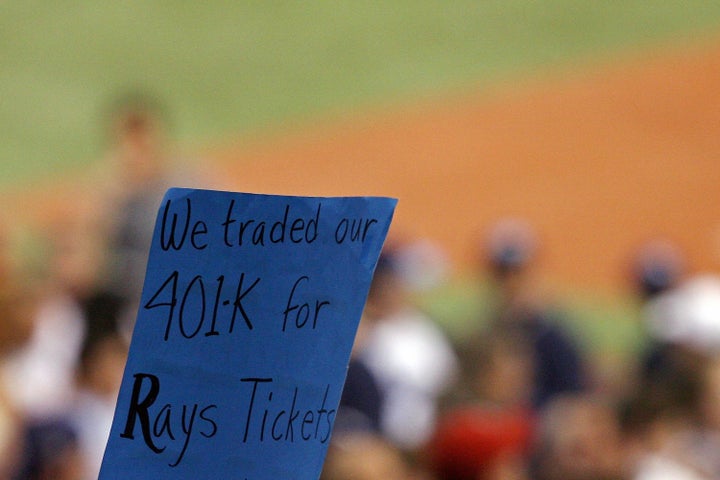
Should you start a 401(k)? After all, it's what generally successful companies tend to do: offer a financial vehicle for their employees to save for retirement.
And while you're probably going to give the job of setting up the 401(k) to a CPA or an outsourcing firm, there are still things that you, as the owner of your company, should understand before you get the ball rolling.
Here are five things you need to know about starting a 401(k).
1. Understand why you're doing this.
One of the most common mistakes companies make when it comes to a 401(k) is not knowing why they're setting it up, says Jewell Lim Esposito, partner in the benefits practice group at the national labor and employment law firm Constangy, Brooks & Smith, LLP. "If it's a tool to be competitive in the marketplace, then design the plan in such a way that employees are rewarded," Esposito says. "If it's a tool for retention, then build in safeguards and incentives for employees to stay at the company and in the plan. If it's a tool to compensate management, then do the company contributions so that they flow through to management -- in a legal way."
Esposito adds that frequently entrepreneurs "don't understand their own employee demographics before setting up the plan. An employer with a very young population might have employees who don't even stay a full year at work. If that's the case, then why incur the cost of letting them enter the plan, just to have them leave?"
2. Yes, there are fees.
The fees are going to vary quite a bit, and in some cases, you may be able to get the fees waived (generally, the bigger the company you have, the easier that is). But if you're a small-business owner with, say, a couple dozen employees, you should probably budget for around $1,500 to $3,000 to get a 401(k) up and running, says Dennis R. Marvin, CFP and principal of Marvin Wealth Management in Cleveland, Ohio, adding, "It can easily be more than that."
It can be less, too. "Some 401(k) providers might waive or reduce the startup costs," adds Marvin. In any case, you can expect administration fees, investment fees (which are deducted from the return from the investment) and maybe even individual service fees that each participant in the plan has to pay. On the plus side, the U.S. Department of Labor has issued new regulations requiring retirement plan service providers, starting Jan. 1, 2012, to disclose more detailed information about retirement plan fees and expenses to plan sponsors. It may not lead to fees going down, but at least entrepreneurs may be a little less in the dark about these costs.
The U.S. Department of Labor also has a wealth of information at its website to help point entrepreneurs toward the 401(k) light.
3. Realize there's variety in your 401(k).
There are numerous types of 401(k)s, but in general, most employers offer either a traditional 401(k) plan or a safe harbor 401(k) plan.
In a traditional plan, you contribute a percentage of income to each employee or match the amount your employees decide to put into their account. You can even do both -- for instance, match the amounts and then as a bonus, add a little more in at some point during the year. You do, obviously, have to remain with the limits of the current tax law: $16,500 for people under 50, with people over 50 allowed catch-up contributions, up to $22,000 a year. The maximum total amount that can be contributed by you and your employee is $49,000.
The safe harbor plan is pretty close to the traditional 401(k), with a few differences. For instance, under most of these safe harbor plans, mandatory employer contributions must be fully vested when they're made. That is, whereas with a traditional plan, you can require that any matching funds you present don't become the employees' until they've been with the company for five years, anything you give to the employee's 401(k) is theirs immediately.
4. You will be tested on this.
For traditional 401(k)s, not safe harbor plans, there is annual testing to make sure every employee can benefit from a 401(k). An employee making $110,000 or more a year is considered a highly compensated employee (HCE), and employers are required to test -- at least once a year -- to ensure the benefits of the plan aren't lopsided in favor of the HCEs over the non-highly compensated employees (NHCEs).
There are two tests to measure this: an actual deferral percentage test (ADP) and actual contribution percentage test (ACP). If those tests fail, the 401(k) could lose its tax-qualified status, and all contributions and earnings would have to be distributed to all the plan participants. If that happens, the low end of the salary employees won't mind, but you and your highest earning employees aren't going to be happy.
The IRS offers this helpful 401(k) checklist that details how to stay compliant with the law.
5. Don't rush.
As Rob Wilson, president of Employco, an HR outsourcing firm, asks, "Why offer a bad 401(k)?" Wilson says an entrepreneur will encounter three different types of employees: the group that won't participate no matter how good the 401(k) is, the group that will say, "I'll take it" but won't spend much time on the details of how it works, and the group that will pore over every line. It's that third group you might as well spending time impressing.
And if you do everything right and develop a 401(k) worth bragging about, boast all you want about its merits -- it is, after all, a tool that you can use to attract and retain good employees -- but be careful about getting too deep in the weeds with your company's 401(k).
"Never give investment advice," advises Wilson. "You don't want to open yourself up to liability issues."